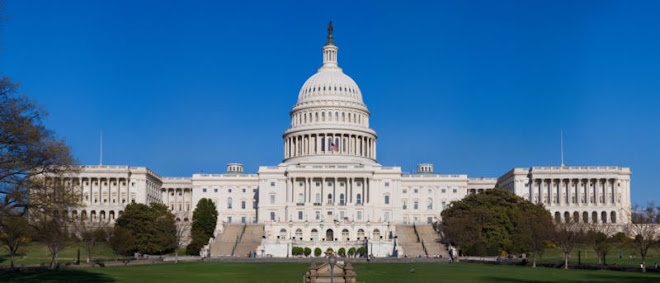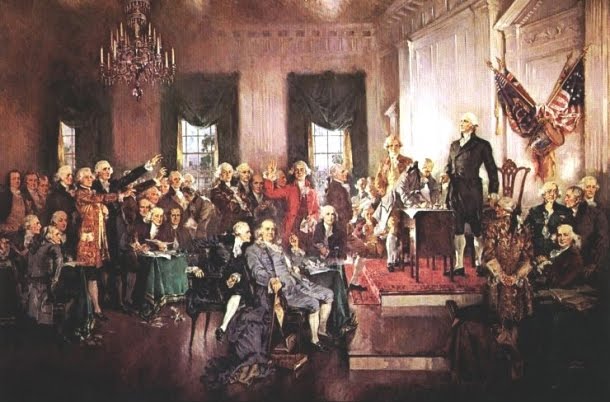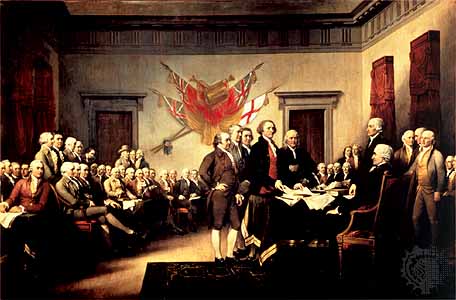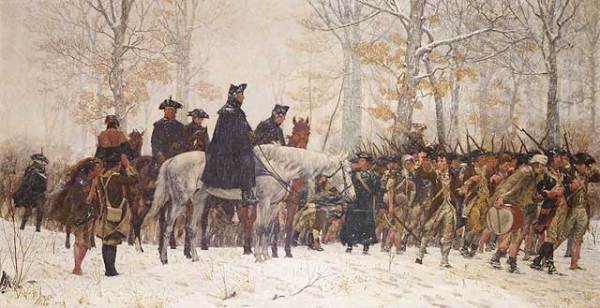From AEI:
Dems Retreat to Coasts as GOP Rules Vast Interior By Michael Barone
Washington Examiner
Tuesday, September 28, 2010
Here's an exercise for some evening when you're curious about big nationwide trends in this year's elections.
Get an outline map showing the 50 states and take a look at the latest poll averages in pollster.com in each race for senator and governor. Color in the percentage (rounded off; no need for tenths) by which either the Republican or Democratic candidate is leading (I use blue for Republicans, red for Democrats) in each state.
The results are revealing, even breathtaking.
The map of the Senate races shows Republicans leading over almost all the landmass of America. Democrats are ahead in the three West Coast states and Hawaii (though not by much in California and Washington) and by 1 point in Nevada. They're also ahead in four states along the Atlantic Coast--Maryland, Delaware, New York, Connecticut--plus Vermont.
Republicans lead in all the other Senate races, from Philadelphia to Phoenix and Boca Raton to Boise. True, their candidate leads by only 1 point in Barack Obama's home state of Illinois. And they've got narrow leads in some mountain states (West Virginia, Colorado, Kentucky).
But overall Republicans are doing very well indeed, with statistically significant leads in every other state with a governor contest this year.The map of governors' races is not much different. Democrats lead in New York, all the New England states except Maine, plus Maryland. They lead in Arkansas where they've got a popular one-term incumbent and in Colorado where the party's nominee has severe resume flaws and former Republican Rep. Tom Tancredo is running as an independent. Democrats lead in Hawaii and Minnesota, normally Democratic states where Republicans have held the governorships for the last two years.
Two other big states have close races: In California Republican Meg Whitman barely leads septuagenarian Democrat Jerry Brown, and in Florida the race is tied.
But overall Republicans are doing very well indeed, with statistically significant leads in every other state with a governor contest this year.
It would be more difficult to draw a map showing the party margins in the 435 House districts. For one thing, there are no publicly available polls in many districts. But if you could draw such a map, I think you'd see Democrats holding onto districts dominated by their core constituencies (blacks, Hispanics, and the affluent voters Joel Kotkin calls gentry liberals) and struggling just about everywhere else, from factory towns to high-income suburbs.
Taken together, all these maps show a Democratic Party shrinking back to its bicoastal base and a Republican Party expanding to take in most of the vast expanse of the continent.
Now, the geography can be a little misleading. The Democrats' Northeast and Pacific Coast bases are heavily populated, and the states where they're leading in Senate races cast 136 electoral votes in 2008. But the states where Republicans are leading cast 274 electoral votes.
These 2010 maps are quite a contrast with the maps you might have drawn just after the 2008 election.
Then liberal pundits especially, but also more neutral commentators, were arguing that the Republican Party had receded to its base--most of the South, all of the Great Plains and some of the Rocky Mountains. The Democrats were expanding to the New South (Virginia and North Carolina), the old Midwest (Indiana), the Rocky Mountains (Colorado, New Mexico, Nevada).
Extrapolating from the 2008 election results, some Democrats foresaw a 40-year period of Democratic dominance. It turned out to last about 40 weeks, as Republicans passed Democrats in polls on the popular vote for the House in August 2009.
Now we see Barack Obama campaigning at the University of Wisconsin at Madison, in Dane County where he won 73 percent of the vote in 2008, chiding students for their apparent apathy. Sen. Russ Feingold, who lives in Middleton, four miles away, was unable to make it--and it's not the first Obama event in Wisconsin he's skipped.
Republicans should not get too giddy. The election has not been held yet (though early voting has begun in a few states) and Obama may indeed whip up some enthusiasm in the Democratic base. Republican candidates' flaws may prove fatal in some states and districts.
Moreover, as the political turnaround of the last 22 months has shown, voters stand ready to punish a party that passes bills they hate or fails to stay true to stands they love.
But for the moment, anyway, the vast expanse of America is hospitable to Republicans while Democrats seem appreciated only in their coastal and campus redoubts.
Michael Barone is a resident fellow at AEI.
A READER ON THE STATE OF THE POLITICAL DECAY AND IDEOLOGICAL GRIDLOCK BETWEEN ONE GROUP WHO SEEK TO DESTROY THE COUNTRY, AND THOSE WHO WANT TO RESTORE IT.
The Rise and Fall of Hope and Change




Alexis de Toqueville
The American Republic will endure until the day Congress discovers that it can bribe the public with the public's money.
Alexis de Tocqueville
Alexis de Tocqueville
The United States Capitol Building

The Constitutional Convention

The Continental Congress

George Washington at Valley Forge



No comments:
Post a Comment